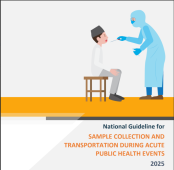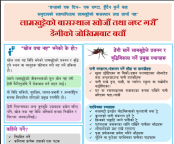Published: 2025-12-07
Published: 2025-12-01
Published: 2025-11-23
Published: 2025-11-16
Published: 2025-11-09
Published: 2025-11-02
Published: 2025-10-26
Published: 2025-10-14
Published: 2025-10-13
Published: 2025-10-12
Published: 2025-12-07
Published: 2025-12-01
Published: 2025-11-23
Published: 2025-11-16
Published: 2025-11-09
Published: 2025-11-02
Published: 2025-10-26
Published: 2025-10-14
Published: 2025-10-13
Published: 2025-10-12
Epidemiology and Disease Control Division was established as a Division of Statistics in 2030 BS and reorganized as Epidemiology and Statistical Division in 2035. According to new organizational structure developed in 2050 BS, this Division is named as Epidemiology and Disease Control Division. With the guidance of Ministry of Health, DoHS and co-ordination of centre.....Read More

It is our pleasure to provide information about Epidemiology and Disease Control Division through the website. The main purpose of this website is to provide the precise information of objective, sections and their objectives, activities, programs and activities and all other information related to the organization. We are in process of creating a feature rich resource center within the website itself. It also provides brief information of the EDPs that support us in all aspects of our function. This site also facilitates every level of people by providing our publications, notices and media related documents. Read More

Sep 18
National Guideline for SAMPLE COLLECTION AND TRANSPORTATION DURING ACUTE PUBLIC HEALTH EVENTS 2025
Read More
Jul 21

Jul 21
SEARCH AND DESTORY MOSQUITO HABITATS LEAFLET
Read More
